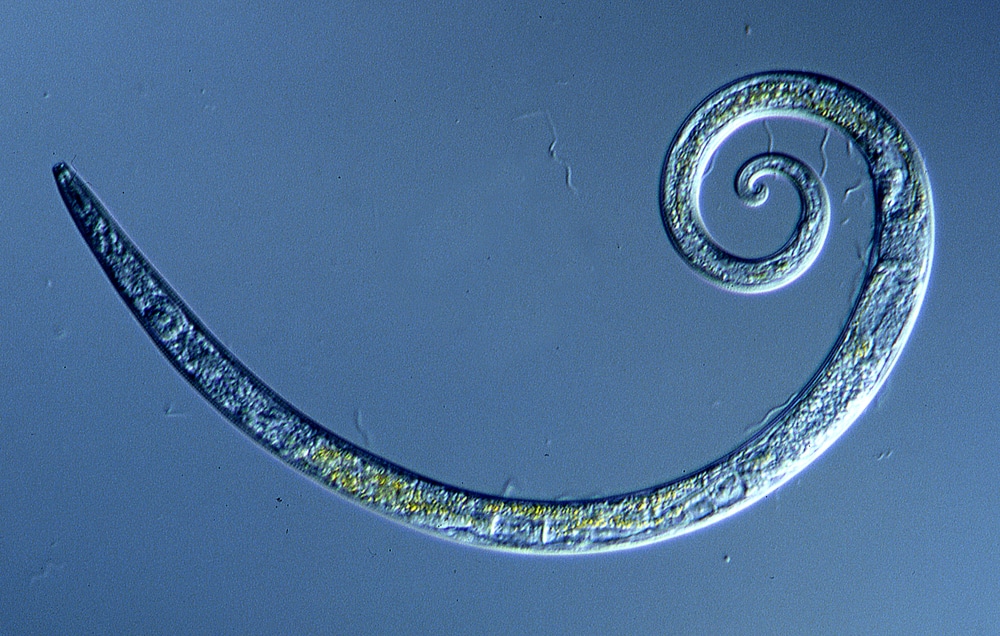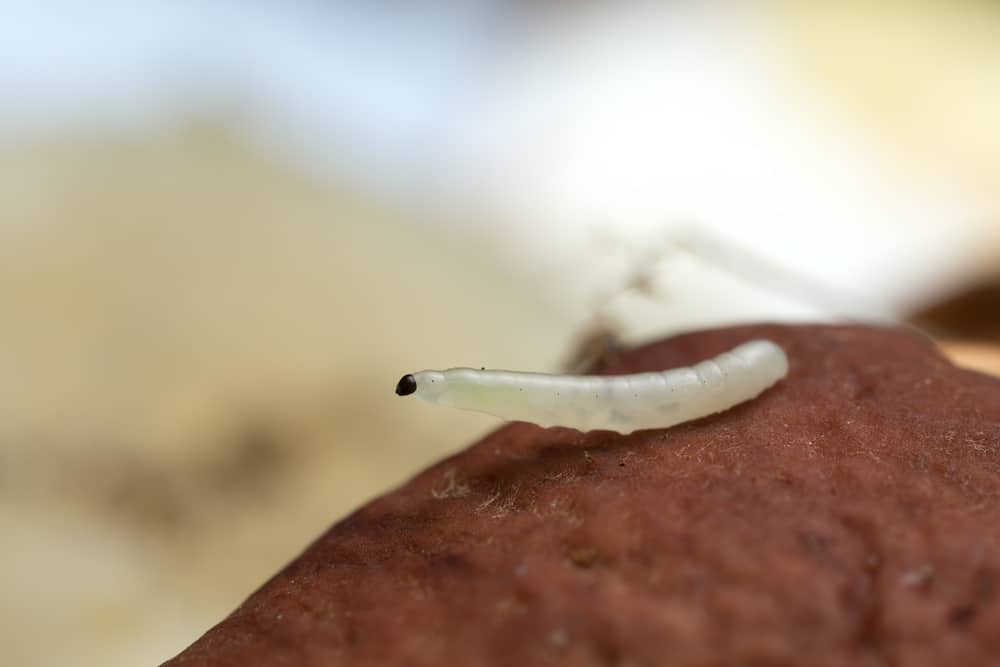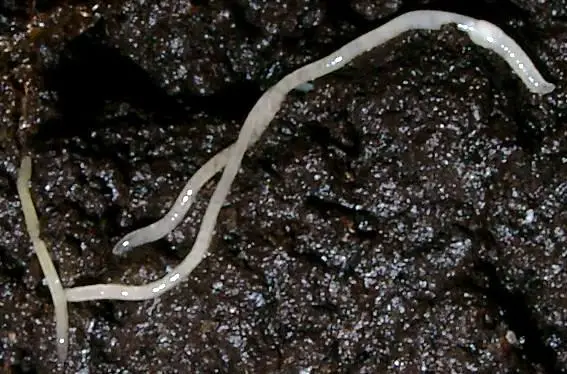If you are wondering “Are Mealybugs Harmful to Humans or Plants?” you will be pleased to know that these little critters are not a significant hazard to human health, though in rare cases they can provoke allergies (explained below). However, mealybugs are a common garden pest that will pierce and damage the stems of your precious plants and crops to drink their sap.
And if you are a farmer or horticulturist, an infestation of mealybugs could certainly harm your livelihood.
Learning to recognise the signs of mealybug infestation means that you can keep your house and garden plants free from harm.
In This Article: We will run through what mealybugs are and how they damage plants. Well also take a look at what you can do to get rid of mealybugs if they are active in your garden.
So, Just What Are Mealybugs?

Mealybugs are little soft-bodied white or pale scale insects that turn up in masses on plants in moist, warm places.
The name mealybug can apply to several species including Planococcus citri, Pseudococcus longispinus, and P. calceolariae.
The clustered appearance of these insects looks powdery, like flour or meal, hence the name.
Female mealybugs are wingless but the male bugs have wings, enabling them to spread from plant to plant.
Their love of warmth means that they are commonly found on houseplants or in greenhouses.
Masses of these insects typically cling to leaf sheaves, twining stems, beneath loose bark and even roots (depending on the species).
Mealybugs Will Target Your Plants to Drink Their Sap
Mealybugs are sap addicts and spend their time feeding on the juices of the plants they infest.
The mealybugs attach themselves to plants and pierce the stems to suck flowing sap.
Have You Noticed: They stay attached by secreting a waxy, powdery coating that protects them while they feed.
Mealybug Feeding Damages Plants and Causes Disease
Plants are damaged by mealybugs because their outer protective layers are penetrated by the insect’s feeding parts.
This harms the plant in the following ways:
- weakening of the plant
- stunted growth
- reduced vigour
- yellowed leaves
- leaf drop
- vulnerability to disease
Mealybugs are also vectors for a number of plant diseases including sooty mould, which is encouraged by honeydew, a sugary waste product that is produced by the mealybugs as they feed.
This spreading mould gives leaves and stems a stained, blackened appearance.
Which Plants Can Be Harmed by Mealybugs?

Mealybugs can cause problems for a wide variety of plants.
They are a scourge of the greenhouse owner and vegetable gardener.
Plants affected by mealybugs include:
- Cacti and succulents
- African violets,
- Bougainvillaea
- Citrus plants
- Fuchsia
- Grapevines
- Hoya
- Orchids (especially Phalaenopsis)
- Oleander
- Passionflower
- Peach
- Tomato
In the tropics, mealybugs can cause significant damage to crops of mangos sugarcane and pineapples, with loss of crops and income.
Though Rare, Mealybugs Can Cause an Allergic Reaction in Humans Too
All insects are capable of inducing allergic reactions in humans.
The dusty powder and honeydew contain glycoproteins and chemical complexes that irritate inhalation or touch.
Prolonged (usually occupational) exposure to mealybugs has the potential to cause:
- Rhinitis (nasal irritation)
- Conjunctivitis (eye irritation)
- Chest tightness and wheeze
- Urticaria (itching)
Identifying a Mealybug Infestation
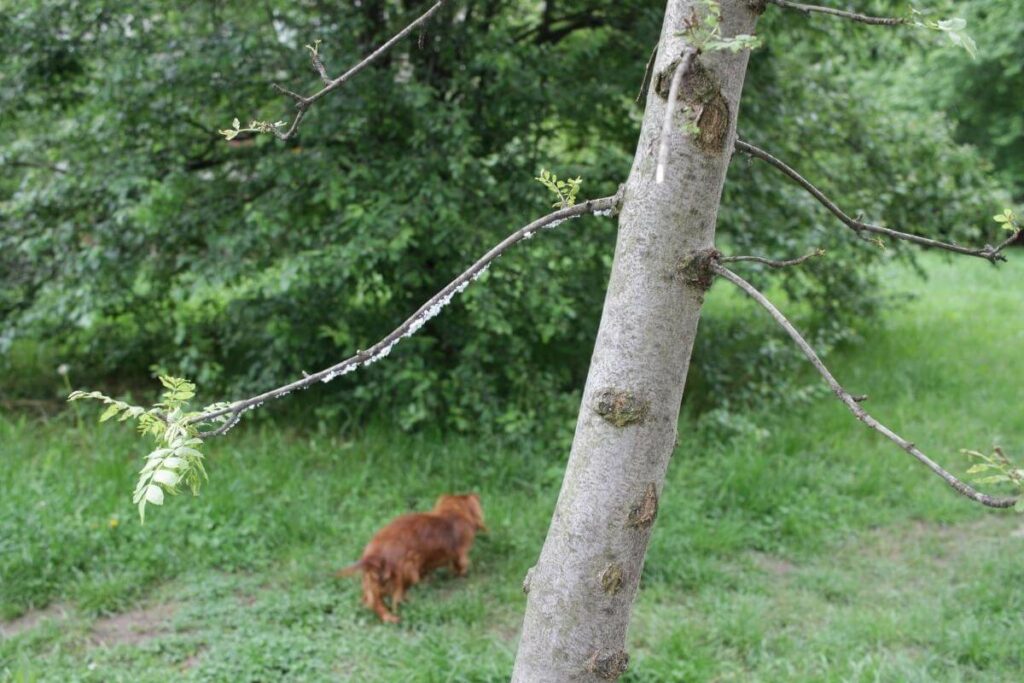
The first thing that prompts examination of your plants is a deterioration in their condition.
Well-fed and watered plants that receive adequate light, but fail to thrive are suffering from a disease.
Inspect your plants to look for the following signs of mealybugs:
- A fluffy, powdery white wax is present between or underneath leaves
- The presence of orange-pink mealybug eggs within the powdery coating
- Black sooty mould
- A waxy white coating on plant roots
How to Get Rid of Mealybugs
Getting rid of mealybugs requires a combination of eradication of the infestation and the prevention of its spread or recurrence on other plants.
Because of their waxy coating, mealybugs won’t make it easy for you. These pests require a sustained course of biological or chemical control to be fully removed.
Depending on whether you are an organic gardener or use chemicals, you have a number of options.
Organic Strategies for Removing Mealybugs
- If an organic approach is a priority for mealybug control, your first step should be to remove all heavily affected plants rather than eradicate the mealybugs.
- Clear greenhouses or the areas that are close to an infestation of any dead leaves or prunings as they may be carrying mealybug eggs.
- Rubbing alcohol can be applied topically to an infestation, or used as a spray. It will desiccate and kill the mealybugs. Care should be taken when treating delicate plants.
- Apple cider vinegar and hydrogen peroxide can be used similarly.
- Steam is also capable of killing mealybugs on your houseplants, use a handheld steamer with targeted application to the affected areas of a plant
- Essential oils are an effective way of treating mealybugs and other garden pests organically. A solution of Neem oil, limonene, or ginger oil will prove noxious to the mealybugs and prevent their return.
- For soil infestations, coffee grounds and diatomaceous earth can prove an effective treatment.
- You can also purchase commercially produced organic sprays that use plant oils and fatty acids.
Organic gardeners can also harness the natural predators of the mealybug to keep their numbers down.
Attract these insects to your garden in the summer months so they can get to work on this pest:
- Ladybirds will actively eat any mealybugs and the eggs that they encounter.
- Parasitic wasps are also natural predators of the mealybug.
Pesticide Control of Mealybugs
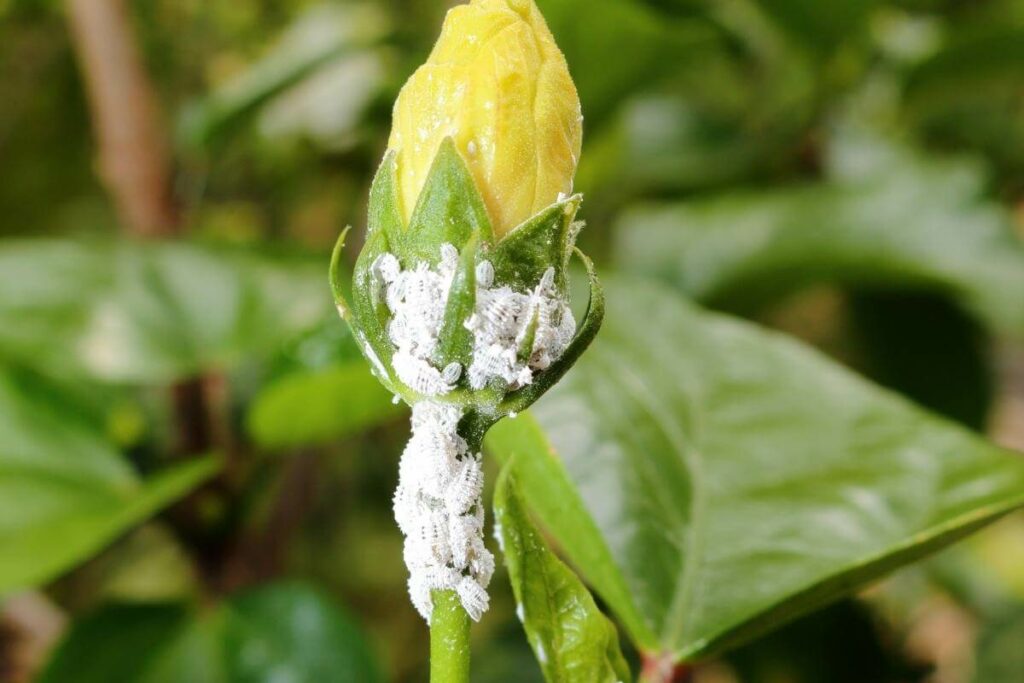
Store-bought topical and spray pesticides can be used on mealybugs, but care must be taken with application so that beneficial insects and pollinators are not harmed by these chemicals.
Watch Out: Always follow the instructions for use and never exceed the maximum number of pesticide applications.
When It Comes to Mealybugs, Prevention Is Better than Cure
The main way in which mealybugs are spread is through the introduction of an infested plant into an environment.
If you are bringing new plants into your greenhouse, garden, or home, it may be wise to examine and then quarantine the plant for a period to check for mealybugs and other pests and diseases before bringing it into contact with your other plants.
Rounding Up
Now you know what mealybugs are, you should find it easy to locate and eradicate them from affected plants.
Keeping your garden a biodiverse environment by attracting a variety of insects and pollinators should help keep this pest at bay through predation.
Good greenhouse hygiene will also keep your precious plants protected from this common pest.
